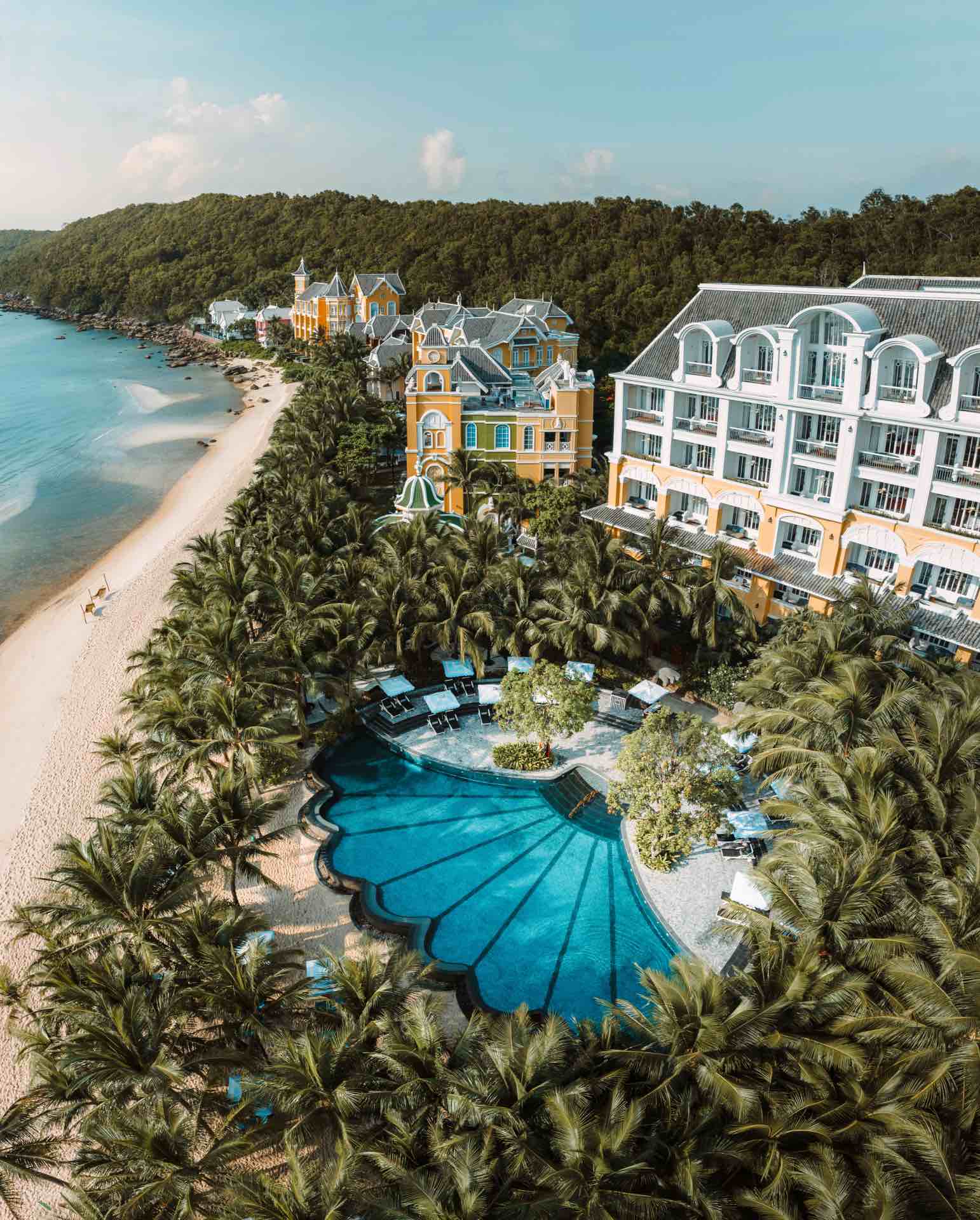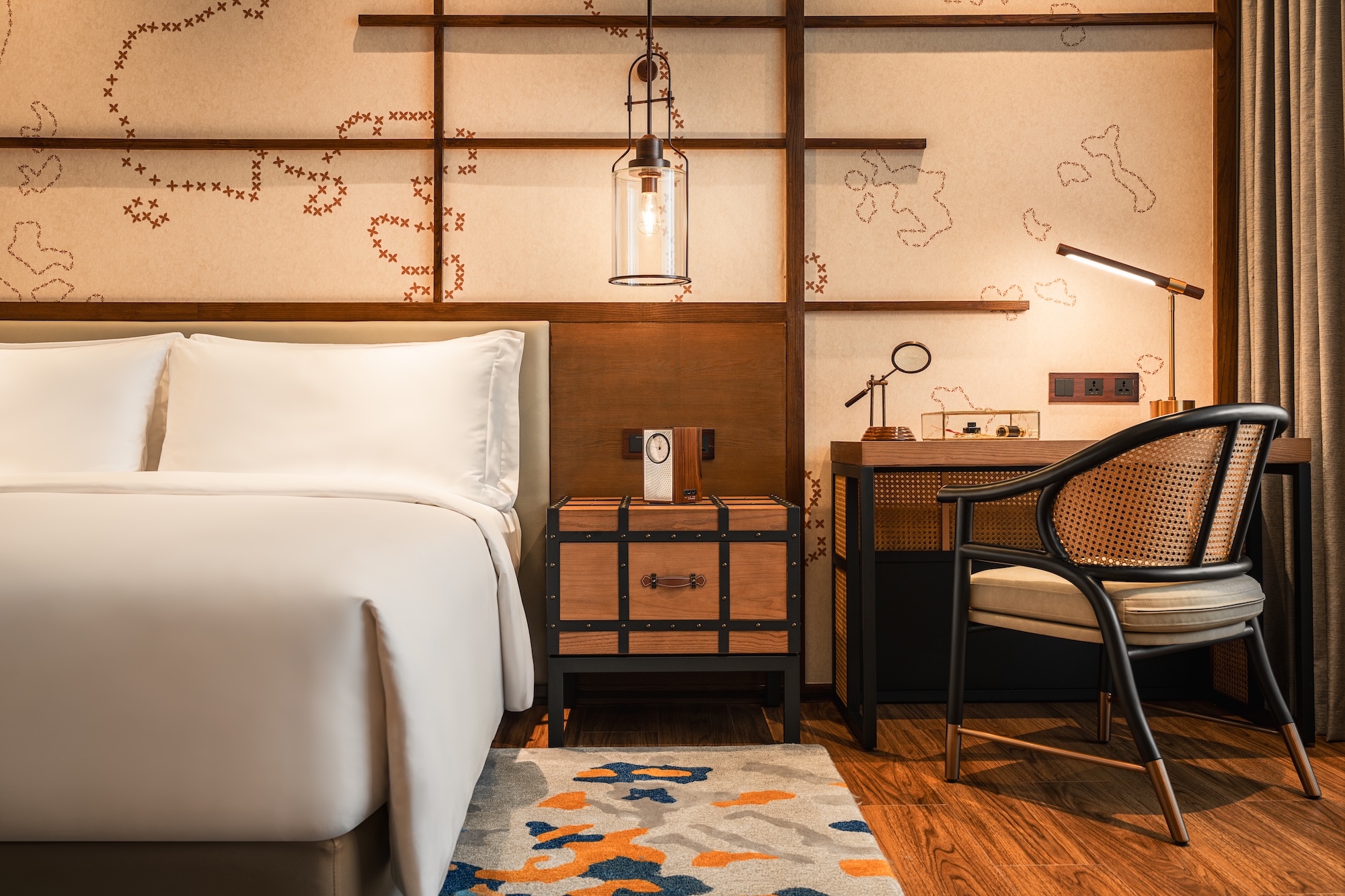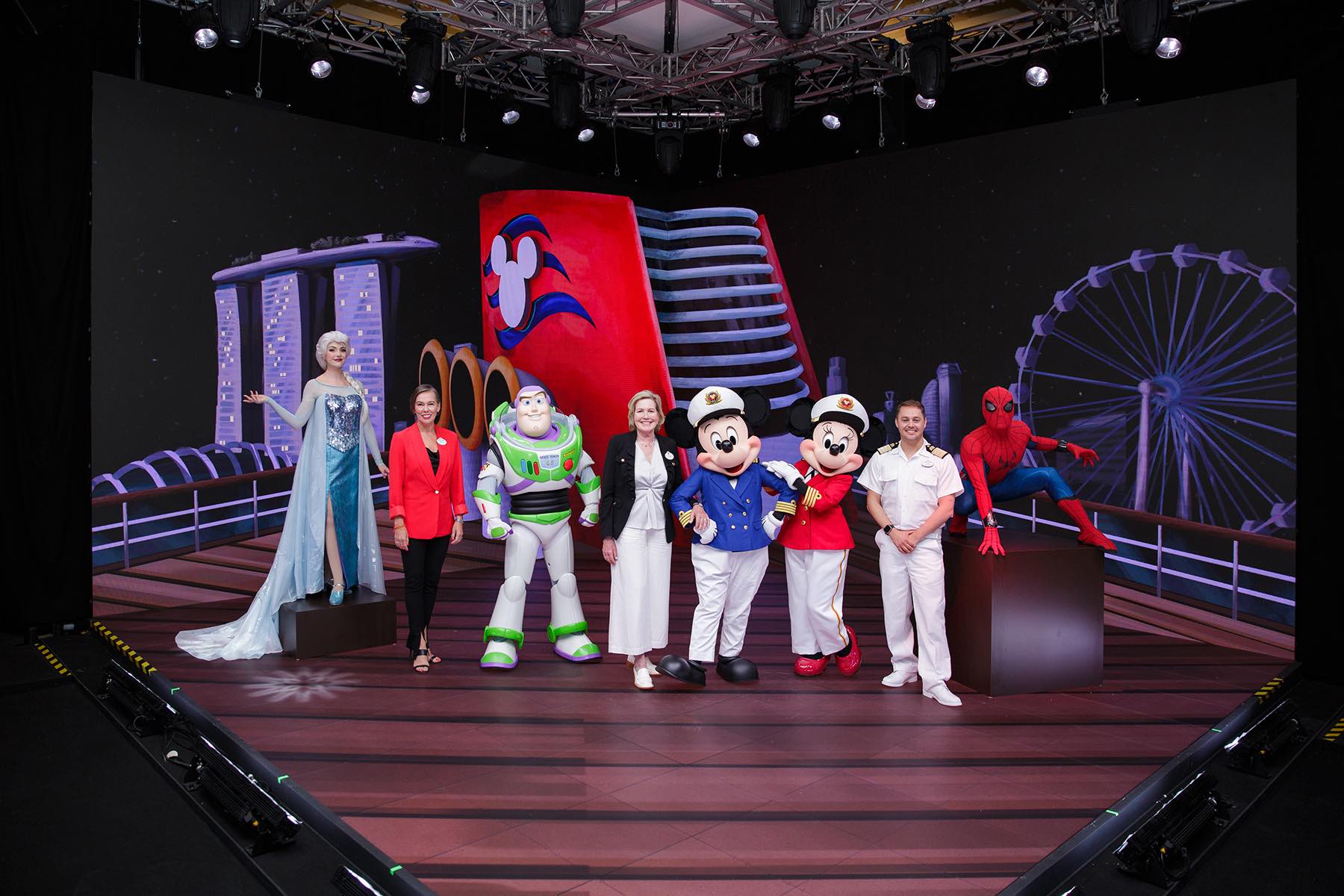Avoiding the throngs that flock to Coco Chanel stores and the Eiffel Tower, witting traveler Mona Teo attempts to discover a side of France most don’t immediately associate the country with.
I am antsy, hungry, and absolutely sick of sitting. I have taken a four-hour train ride (that annoyingly, had no power sockets to charge my laptop, Kindle or phone) from Lille into Angoulême, and walked just a short 500m before being crammed into the backseat of a small Volkswagen for the next two hours—surrounded by bags of delicious French cheeses, bottles of wine and piles of saucisson that I cannot dig into without cutlery.
I was thinking to myself: “It wouldn’t be the first time, but it’ll be somewhat sacrilegious to drink from the bottle when the wines are this good. I shall refrain from opening one of the many bottles of Bordeaux with my shoe, for now.”
I am deep in southern French countryside, or more accurately, the “backside” of France, as my local friends call it. We are on our way to a donjon that we rented off Airbnb for the week, our car loaded with supplies and irate passengers dying to stretch their legs. As much as I love Paris for its chic, gritty sophistication, Lille for its cute Flemish influence (and excellent Belgian beers) and Bordeaux for its close proximity to miles of vineyards, one of my favourite ways to experience France is in her countryside, away from maddening Chinese tourists waving their credit cards at poor Chanel boutique staff and Metros that reek of pee. Plus, it’s not every day that a city kid who has been born and bred in modernity gets to stay in a castle keep.
We finally turn off the highway, following a sun-worn, twisted sign that reads “La Croix Blanche”. The road meanders through the tiny town, and given the late hour of 5pm, is more accurately, a tiny ghost town. The tabacs and boulangeries are firmly shut, and the only soul we pass by is a wizened old lady walking her dog whose eyes widens in surprise at, most possibly, the only two Asians to have ever set foot in her hometown.
Through the castle gates
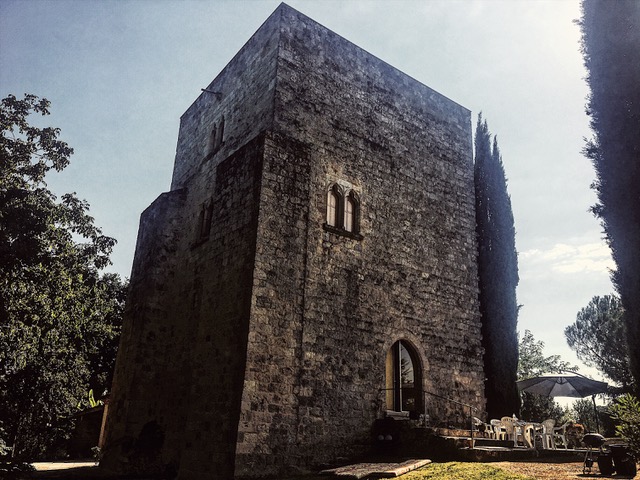
We turn off the main road and onto a dirt road, with Donjon de Fauguerolles looming magnificently in the distance, the sense of drama amplified appropriately by the cloud of dust our car stirs up. Around her are acres of manicured lawns and a gentle slope that leads into a forest, a literal sea of green that makes the building seem almost small in comparison. It looks exactly like in history books: large, reinforced French doors that lead into a dimly lit cavern of a living room, the high ceilings criss-crossed by heavy wooden beams. I run up a steep flight of wooden stairs (they creak as expected) into the first sleeping quarters. It looks like something exactly out of a Game of Thrones episode—a large four-poster bed with a velvet canopy in the middle, tapestries on the thick stone walls and creepy figurines on worn wooden furniture that I am told is straight out of old France.
Past a stone archway in the corner of a room is yet another steep flight of steps, this time carved out of stone. They lead up to more sleeping quarters that one imagines used to house the staff. The entire space manages to be grand, yet adorable at the same time, and I spend the next hour exploring every nook and cranny, running my hands over the cold stone walls, almost feeling the centuries of history steeped in them.
My friend tells me the donjon was first built in the 13th century. I repeat, the 13th century. For someone who has grown up in a country of skyscrapers and perfect sidewalks, this little titbit of information is hard to digest. I look at what will be my home for the week in a new light, trying to wrap my head around the fact that it was probably home to minor nobility at some point and is now filled with a group of Internet-age millennials frantically trying to connect their devices to the faltering WiFi. Talk about juxtaposition.
French fresh
At my insistence, we visited a local farmer’s market to stock up on groceries (why anyone would choose the fluorescent-lit aisles of a supermarket filled with subpar products over a real market is beyond me). La Croix Blanche’s local market is a small affair, but as they say, it is quality over quantity. There are stalls selling cheese made literally a day ago from the milk of a cow the stall keeper/farmer speaks of as fondly as a proud mother would her child. Next to her, the owner of a small olive grove practically forces tiny cups of delicious, fruity olive oil into our hands, “c’est bon, non?”, he asks.
My favorite stall has got to be the butcher’s. A plump, jolly red-cheeked woman smiles benevolently down at us from behind a glass case of plucked roosters, bloody bunnies with their teeth bared menacingly and pale medallions of veal. We ordered a fat, plump chicken and she happily lops off its head at our request with a hefty cleaver, then stuffing it with gizzards before wrapping it in wax paper (I am not ashamed to say that later, back in the kitchen, it will be the first time I’ll handle chicken heart and liver).
We wander around awhile longer, marvelling at the heart-sized “ancient tomatoes”, wonky-shaped vegetables, herbs like fennel and basil sold only by the pot, and strawberries so wonderfully fresh you smell them before you see them. The most beautiful part of this entire experience is despite the boat full of groceries we brought home, there was not a gram of plastic in sight. They pack everything in brown paper bags, wax paper, or little wooden crates that would easily fit into any hipster café.
In case you’re wondering, everything tasted as good as they looked. It was all organic, but without the excessive mark-up. Say what you want about the French—they know their food and are rightfully passionate about it. At this level of quality, I suppose it’s hard not to be.
Further afield
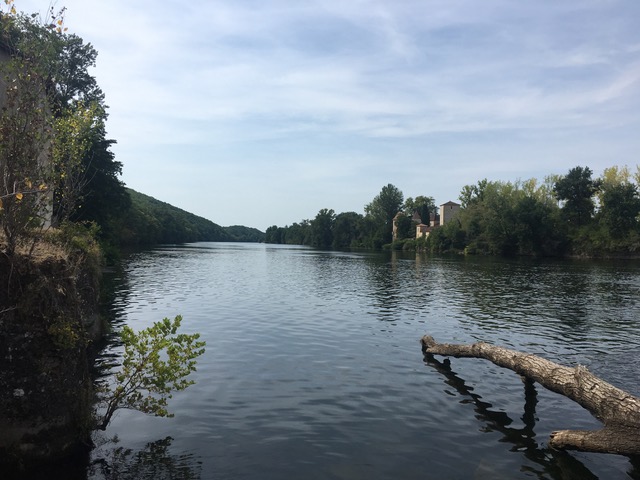
The village of La Croix Blanche is part of a bigger region called Lot de Garonne, and it is a popular spot for French locals to holiday in. Part of the reason for its popularity is the gentle Lot River, a 7km waterway that owes its calm to the two dams that flank each end. Here, you find many tourists renting canoes or kayaks, or the more affluent roaring down in their speedboats. It is a beautiful way to spend the afternoon, although I must warn you that your shoulders will hurt like hell unless you are used to the motion.
It is worth it though—the river is lined with patches of forest and summer homes that range from ‘adorable country’ to ‘castle magnificent’. One of the highlights is indeed, a castle, or as they call it in France, a chateau. Should you find yourself in the area, I highly recommend packing a little picnic of fresh bread, cheeses, cold cuts and rosé, and stop along one of the banks for a quick lunch. Once you are fortified, make your way down to the end of the river to see the dam. It is admittedly, just a dam. But with the castle in the distance, you feel as though you are at the end of the world in a very different time.
The area is also popular for the miles of hiking trails that criss-cross the countryside. From dried out fields of grass to rows of enormous, merry sunflowers to tunnels of trees that make you feel like you are entering an enchanted forest. If the weather permits, take a hike. Our donjon was conveniently located along one of the longer routes, an easy three-hour hike on mostly flat terrain that took us across dry fields and into damp forests. Along the way we saw many species of flora that I am sure would engage a botanist to no end. I lack the knowledge, but I can say with certainty that the area is perfect for landscape and nature photography. For a 10km hike, the landscape does change quite dramatically along the way.
More than meets the eye
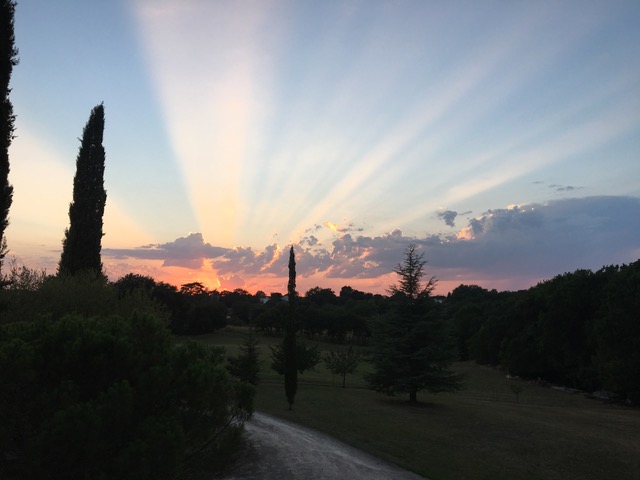
Toward the end of our stay, the groundskeeper kindly allowed us access to the previously locked rooftop. Climbing yet another steep set of stairs carved out of stone and clambering out through a trap door, stood a view that is surely one in a million. Imagine feeling as though you are at the top of the world, with land stretching towards the horizon on all sides, dotted with pine forests, little cottages and patches of farmland, nary a soul in sight. In the background, the big glowing ball that is the sun slowly sets at 10pm, bathing the land in a golden glow that slowly fades to tendrils of pink, then purple, and eventually, an indigo blanket sparkling with stars.
Sure, there may not be any Louis Vuitton stores or posh bistros around. The Jardin de Luxembourg sits prettily miles and miles away, and the Eiffel Tower and Arc de Tromphe can only be seen if you Google it. Yet, this is the real France. The France you should be so lucky enough to experience. Real, fresh foods untouched by GMOs; structures older than your mind can fathom, literal acres of land to frolic in and horizons that sing of libertie—it is an experience, in my opinion, best enjoyed with a case of good, local wine.


